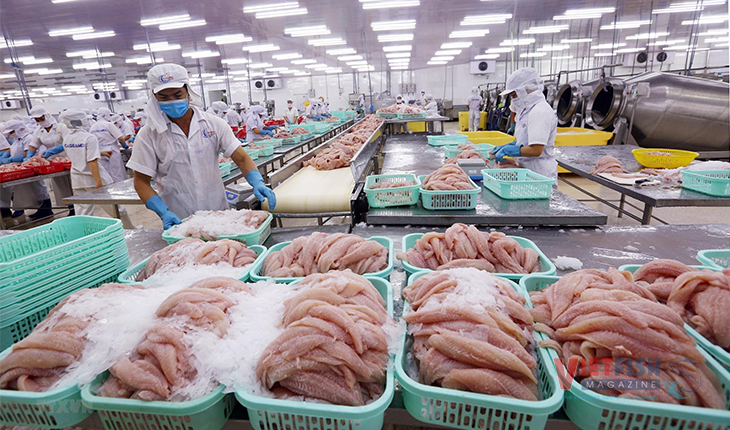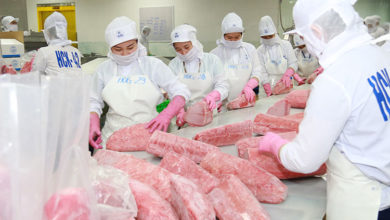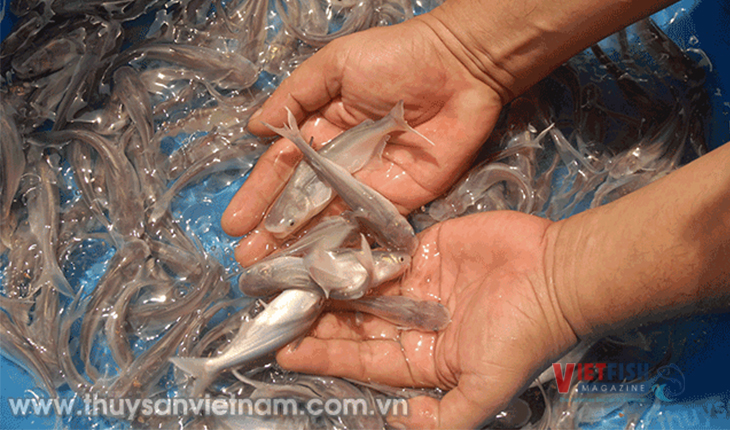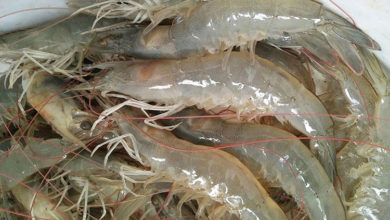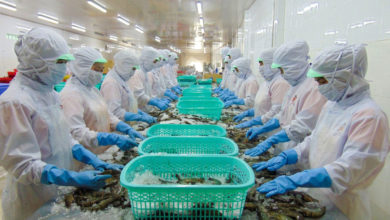Vietnam shrimp production cost – Comparing with Ecuador is lame as it is not in the same frame of reference, the reason is:
1. Ecuador’s shrimp farm is several tens of hectares at least, some are hundreds of hectares, one thousand hectares or even four thousand hectares; therefore, Ecuador can have good shrimp volume, despite their low density-stocking density practices. If Vietnam applies such a low stocking-density culture there will be not enough volume to address country’s targets because most of the farms has too small area; except few big corporations such as Minh Phú, Bim, Trung Sơn, etc. has hundreds of hectares if they are willing to change their shrimp farming model as that of Ecuador.
2. At low density of 20 individuals per square meter in Ecuador, shrimp takes nutritional advantages of natural foods in ponds; therefore, it is acceptable to grow shrimp with low protein feed (35-28% of protein). Feed accounts for 50% of the production cost while Vietnam’s shrimp farms are so small that shrimp has been stocked at a higher density to produce higher volume or biomass and because of high density, premium feed has been produced to support shrimp growth.
It’s not entirely true when supposing the feed accounts for 50% of the production costs, resulting in the fact that Vietnam shrimp production cost is high due to premium-feed price. In 2016, I conducted a personal survey related to feed in India and Ecuador to compare with Vietnam shrimp and I realized that higher protein feed in Vietnam helped shorten days of culture (shrimp reaches 20g just after 80 days in Vietnam while it was 90-115 days in Ecuador and 110-130 days in India). A little high stocking density in India using low protein feeds (36-35% protein) resulted in much higher FCR than the higher protein feeds in Vietnam. Thus, feed costs were not lower while it resulted in longer production cycle.

3. There is a situation that majority of shrimp farmers in Vietnam are depending on dealers or sub-dealer’s credits for their shrimp farm business, including postlarvaes, feed and top-dressing products not like large farms in Ecuador who buy feed and others directly from feed mills or the main dealers/distributors. Consequences, a big difference in buying feed and others in cash or in credits is the main reason to produce different shrimp production cost between Vietnam and Ecuador plus other advantages of Ecuador for low stocking density model that also reduce power cost, labor cost as well as a little cost saving from natural food in ponds.
4. While Indonesia’s shrimp farming models is somehow similar to Vietnam’s. However, lower protein feed (35-38%) have been used in Indonesia resulted in higher FCR than in Vietnam, thus there should be not much difference in feed cost per kg of produced shrimp. The biggest difference is also medium or big farms (20 ponds up) in Indonesia also buying feed directly from feed mills or main distributor not as that buying via sub-dealers as in Vietnam.
The target to increasing the success rate to decrease production costs is not possible for short-term strategy as it requires to improve postlarvae quality, feed strategy, and farming models, trainings for farmers, as well as the technical exchanges among farmer community. For example, one of the success factors for Ecuador is the postlarvaes quality that resistant to white spot disease virus (wssv) and thanks to the smart hatchery owners who had selected the survivors from the infected wssv ponds to grow and serve as breeders. Thus, shrimp postlarvaes in Ecuador today has better resistance against white spot syndrome virus while Vietnam has lower success rate, mainly due to wssv happen to the earthen ponds without biosecure application. WSSV has caused huge loss for Vietnamese farmers yearly. In addition, water pollution is a another challenge as Mekong Delta located in the low-tide area together with the poor irrigation system fail to discharge effluents to the estuary while Indonesia shrimp farms located in the high-tide area. Small earthen ponds in Vietnam are not well invested in terms of farm design, paddle-wheels, aerators, and water treatment system, etc. resulting in higher risks of pathogens than lined ponds and finally having very low success rate (<40%).
These above are the key reasons why production cost for shrimp culture in Vietnam is higher than in Ecuador. Thus, we shouldn’t compare Vietnam with another country of a different frame of references.
Short-term solutions:
- Focus on developing a successful earthen pond culture model, including farm design, reservoir and settling ponds, water treatment system, biosecure measurement and application to improve success rates for the earthen pond model.
- Provide training and transfer the successful earthen pond model to small farm households who are working in a farmer group at each region.
- Establish shrimp farmer group tohave better negotiation in buying postlarvaes, feed, and materials at lower prices and also offer loans for to the shrimp farmer
- Standardized conditions for lined pond is
Overall and long-term strategy include:
- Import disease resistant breeding stocks and control the quality of postrlarvaes.
- Constructing the water supply and drainage system in the key shrimp farming areas.
- Proper planning and mapping to determine suitable farming models in accordance with local natural advantages (lined pond, earthen pond, mangrove-shrimp model, shrimp-rice model, etc.)
- Develop the farming Cooperatives at each area in connection to value chains as well as providing loans will help negotiate the prices in buying postlarvaes, feed and others, etc.
- Develop Centers of Training and Transferring in each province where practical scientific experts, field aquaculture experts, and successful shrimp farm owners are invited to instruct, transfer technical knowledge and share experiences to local farmers.
Nguyen Duy Hoa, PhD.
Technical Manager Empyreal, Cargill Inc.


